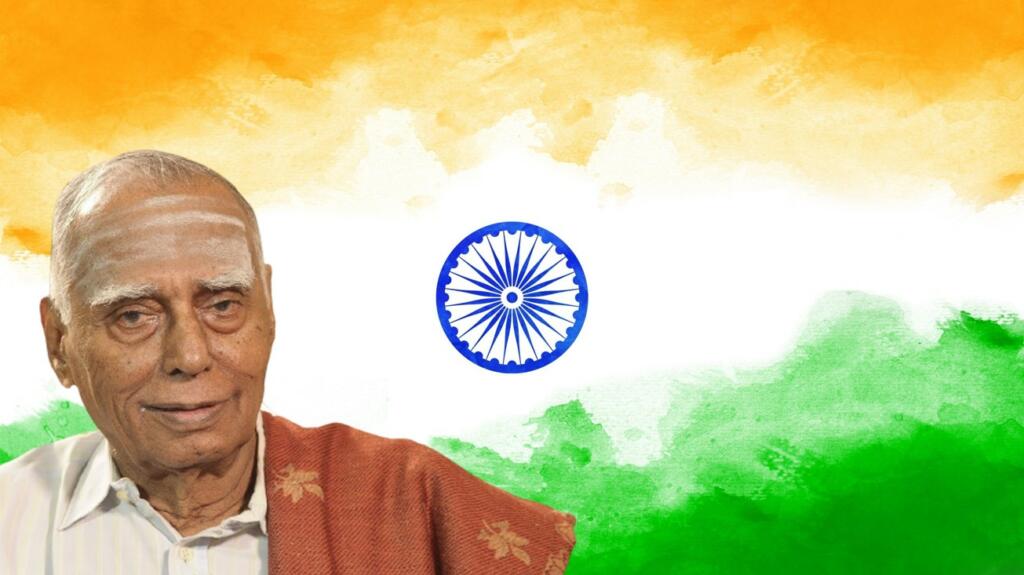India has lost one of its most brilliant polymaths. On Sunday, 22nd January (2022), Dr Ramachandran Nagaswamy, the first Director of the Department of Archaeology of Tamil Nadu took his last breath.
PhD in archaeology
Shri Nagaswamy was born on 10th August (1930) in Madras Presidency during British Raj. His father Ramachandran Sastriga was a Sanskrit Pandit. Walking on his father’s trajectory, Ramachandran also enrolled for a master’s degree in Sanskrit. Later he went on to obtain his PhD in arts and archaeology from the University of Poona.
The coming generations will never forget the contributions of Thiru R. Nagaswamy towards popularising the vibrant culture of Tamil Nadu. His passion towards history, epigraphy and archaeology were noteworthy. Pained by his demise. Condolences to his family and friends. Om Shanti.
— Narendra Modi (@narendramodi) January 23, 2022
Though he was well versed in all other subjects, Ramachandran decided to ploy his trade in archaeology. He took archaeological training under the Archaeological Survey of India (ASI). At the age of 29, he became a curator for art and archaeology and joined Government Museum, Chennai.
Nagaswamy worked diligently for reviving Hindu monuments
After serving Chennai Museum for four years, he was appointed assistant special officer for archaeology for Tamil Nadu in 1963. In 1966, he was appointed as the head of the newly formed Tamil Nadu Archaeology Department. He held this post till his retirement in 1988.
Ramachandran’s work is unparalleled when it comes to the rejuvenation of India’s original history. At a time when Hindu culture and its monuments were considered unscientific and falsehood by left-wing intellectuals, Ramachandran led a ferocious front to protect historical monuments.
Spread the knowledge of Indian history among the masses
He helped protect historical monuments which include the Chera inscriptions at Pugalur, the palace site of Gangaikonda Cholapuram, the famous 17th century Thirumalai Nayak Palace in Madurai, the Danish Port at Tranquebar and the birthplace of national poet Subramania Bharati in Ettayapuram. Nagaswamy provided the brain behind the now famous sound and light programme at Thirumalai Nayakar Mahal in Madurai.
Like Shri APJ Abdul KALAM, Nagaswamy was widely popular among children. He channelled the curious minds of children towards Hindu culture through his books. Nagaswamy wrote several children friendly pocketbooks which worked as archaeological guides for children. He led social initiatives like the involvement of children and college students in preserving nearby historical monuments and places.
Out of more than 100 books he authored, some of his most famous books are ‘Masterpieces of South Indian Bronzes’, ‘Tantric Cult in Tamil Nadu’, ‘Facets of South Indian Art and Architecture’ and ‘Thirukkural: An Abridgement of Sastras’.
A renowned expert all around the world
His unparalleled brilliance saw him appear as an expert witness in London High Court in the famous Pathur Nataraja case. London High Court had termed him as ‘an unequalled expert in his subject. He was instrumental in bringing the lost idol back to India.
Contribution in Ram Mandir
Indians will never forget his unequivocal contribution in the Ram Mandir case. He was an expert advisor to Lucknow Bench of Allahabad High Court in Ayodhya title suits. In his research, he had clearly stated that the place was sacred and not just a normal human habitation.
In his report to the Court, Nagaswamy had said, “The excavations done by the Archaeological Survey of India (ASI) brought to light several carved stones that indicated the presence of a sacred place. Some of the material unearthed included pillars with engravings on them, an outlet for water in the form of a crocodile mouth,”
Well respected academician
Nagaswamy was awarded the “Kalaimamani” award by the Government of Tamil Nadu for his groundbreaking work on Sekkilar’s Periyapuranam. In 2018, the Modi government acknowledged his service to the nation with a Padma Bhushan award.
He was an avid reader and life-long learner of history, archaeology, and epigraphy. Moreover, at a time when academicians were getting corrupted with postmodern ideology, Nagaswamy stood aside as the forbearer of truth. Nagaswamy’s unfortunate death is a great loss to the nation.
